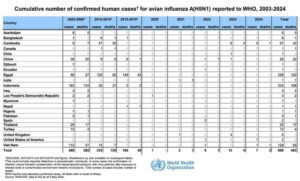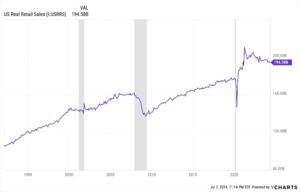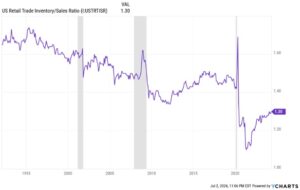Meryl Nass: Why I’m a Fan

Dr. Meryl Nass is a board-certified internist and a biological epidemiologist with more than 40 years of experience in the medical field. Click here to see her very impressive CV.
As a reader of this blog, you probably recognize her name. I’ve linked to her many times in the past, because when it comes to writing with authority about vaccines – and the COVID vaccine in particular – she is one of the best. And by that, I mean one of three or four epidemiological experts in the world writing about COVID and the COVID vaccines whose opinions make sense to me.
When I began reading her daily posts (there are sometimes two or three) about two years ago, I thought she might be some sort of kook. Who but a megalomaniac could devote so much time to one subject?
And I wasn’t alone. She has been continuously accused by “fact-checking” organizations (whose funding is never disclosed) of making misleading statements and causing the public to be wrongly fearful of the vaccines she warns against.
The accusations were concerning. Still, I couldn’t help but be astounded by the amount of detailed research she does. And despite my earliest reservations, I found myself being won over by the quality and quantity of evidence she provides for her claims.
I was also impressed by her emotional strength in enduring and resisting the criticism against her, including professional censures and lawsuits, and how she’s been able to keep her readers updated on her struggles in an even-handed, almost objective way. She has learned how to make very direct and sometimes very serious statements about the vaccines, the manufacturers of the vaccines, and the political and media behemoths that are promoting the vaccines without going beyond the boundaries of what she can prove with voluminous scientific data.
I began as a skeptic. But now I’m a fan.
Which is why I am very interested in and hopeful about the approach she has been using to defend herself against media and regulatory attacks. Rather than dealing with them privately through lawyers, she has been taking them public by publishing the charges against her almost as soon as they are made (often on the same day) in one of her daily posts. She prints the accusation and responds to it in detail so that her tens of thousands of readers can get the facts from the source.
This seems to me to be a bit risky because it must embarrass and infuriate those that are trying to shut her up and shut her practice down. But I’m hoping that because she has so many followers, she will be able to wage her battle both within the jurisdictions that govern the complaints and in a public forum where those of us that are interested in COVID and the COVID vaccines can see exactly how the massive pro-vaccine forces work.
Here’s a recent example. Some guy named “John Gregory,” who calls himself a “health editor” for a group called NewsGuard, which, he says, “reports on and tracks online misinformation,” sends her an email accusing her of making misleading statements… and tells her that his deadline for publishing her response is virtually the next day. (This is a common unethical journalistic practice. And, by the way, I checked into NewsGuard. They are hardly objective. Just another left-wing partisan group claiming to be interested in facts.)
Here’s what he wrote:
Dr. Nass,
I’m emailing in regards to your April 20, 2024, CHD video in which you cited the FDA package insert for the H5N1 vaccine Audenz, and said, “One in 200 people who got this vaccine in a clinical trial died,” and later added, “This is a dangerous vaccine for a nothing disease.”
Video of your remarks has begun circulating widely on social media platforms in the past two weeks, used as evidence for claims like “Dr. Meryl Nass: One of the approved Bird Flu quackccines, Audenz… had a death rate of 1 in 200 during clinical trials.”
I noticed the screenshot included in your original video highlighted the sentence, “Fatal SAEs [Serious Adverse Events] included 11 (0.5%) Audenz recipients and 1 (0.1%) placebo recipients,” even though the very next sentence said, “No SAEs were assessed as being related to Audenz,” meaning that none of the reported serious adverse events – including deaths – that occurred among trial participants were caused by the vaccine.
You also did not mention that the FDA’s own statistical review of Audenz stated that, “No deaths occurred that were considered related to the vaccine,” and concluded, “No major statistical or safety issues have been identified” with the vaccine, or that the published results of the Audenz trial said: “None of the serious AEs or AEs of special interest reported by subjects who received aH5N1c were considered vaccine related. Two subjects in the placebo group reported a related AE of special interest (immune thrombocytopenic purpura and polymyalgia rheumatic); these events were also considered serious AEs. During the study, 12 (0.4%) subjects had serious AEs with a fatal outcome, none of which were attributed to the study treatment, and most (n = 11) occurred after Day 43 during the follow-up period in subjects ≥65 years with underlying severe comorbidities and multiple concomitant medications.”
Is there any reason why you did not mention any of this countervailing information?
My deadline is 5pm eastern today, July 3. Thank you.
Best regards,
John Gregory
Gregory’s goal, of course, was to discredit her by saying something like, “We contacted Ms. Nass to give her a chance to refute these charges but she did not respond.”
But Nass, being a veteran of these sorts of sleazy tactics, responds immediately with a massive amount of proof to back up what she had said – then thanks him for “the opportunity to clarify the information so that your readers will be fully informed.”
To wit:
Dear Mr. Gregory,
Since I provided a screenshot of the package insert of the Audenz licensed vaccine and repeated what it said, this can hardly be characterized as misinformation, which you claim to be investigating. Since I included the next sentence in the presentation, it cannot even be construed as incomplete.
Had you been working on issues of vaccines for over 25 years as I have, you would have been aware that the sponsor (mfr) and FDA, who together craft the vaccine labels aka package inserts, ALWAYS assert that most or all of the deaths and serious adverse events occurring during a clinical trial were adjudged to be not due to the vaccine. Had they judged otherwise, a license would probably not have been issued. A license was issued for Audenz.
Later, when a vaccine is given to millions of people, not just a few hundred as in this case, one learns which side effects are IN FACT attributable to the vaccine.
For example, at least a hundred million Americans had received an mRNA COVID vaccine before it was determined to cause myocarditis, in late May of 2021 by FDA.
That is the reason why the raw data, which I presented, are important. So that people have the information to judge for themselves what risks they may face when choosing vaccination. In fact, clinical trials often exclude sick subjects, and drugs and vaccines almost invariably appear more safe and effective in clinical trial data than they do later, in the real world – a fact known to all medical researchers.
Why did I not mention material from an article? Because I was referring to the Audenz label, which is the legal document that FDA attests is true, unlike published articles which are generally written by the vaccine sponsor and have a lesser degree of reliability. In fact, the numbers in the article versus those in the label are not exactly the same.
Furthermore, if the US government was comfortable with the H5N1 Audenz vaccine, why did DHHS’ BARDA just place an order with Moderna for H5N8 mRNA vaccines, even though the avian flu circulating in the US is H5N1? Even though it makes much more sense to match the neuraminidase portion of the vaccine to the circulating strain… which is done every year when seasonal influenza vaccines are produced?
Finally, I invite you to take a look at the WHO data on deaths in humans worldwide from the H5N1 bird flu, which confirms it is a nothing disease in humans, having mutated to a different form than it once had. The federal health agencies have monitored 9,000 farm workers and all they found were 4 mild cases of disease, no hospitalizations and no deaths in the US over the past several years.

I appreciate you giving me the opportunity to clarify the information so that your readers will be fully informed.
Meryl Nass
End result: Not only did she make it impossible for him to claim that she was unable to answer his (invalid) charges, she exposed his chicanery before his supposed publishing deadline.
I hate the expression, “You go, girl!” But I’ll say it for Meryl Nass.











